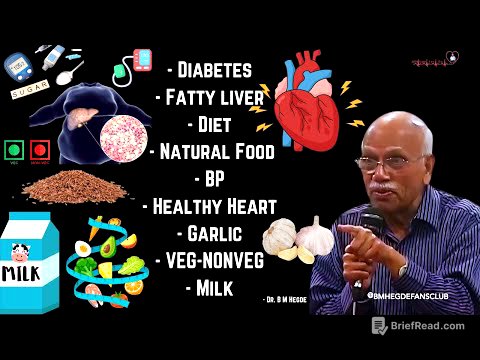TLDR;
This video by Dear Sir provides a trick to solve idioms and phrases questions in competitive exams like CET and SSC. The video explains how to eliminate obviously wrong options and use literal meanings to guess the correct answer. It also encourages viewers to connect idioms with real-life scenarios for better understanding and retention.
- Eliminate obviously wrong options.
- Use literal meanings to guess the correct answer.
- Connect idioms with real-life scenarios for better understanding.
Introduction to Idioms and Phrases [0:00]
The video starts by highlighting the importance of idioms and phrases in competitive English exams. The speaker claims that these questions are easy to score in and aims to provide a trick to solve them quickly. He encourages viewers to like the video before diving into the explanation.
Understanding Idioms and Phrases [0:34]
The speaker explains that idioms and phrases are similar to Hindi muhavare (idioms). He gives examples like "to make a mountain out of a molehill" and "an apple of one's eye." In exams, you're given an idiom and asked to choose the correct meaning from four options.
Trick 1: Eliminating Foolish Options [1:00]
The first trick is to identify and eliminate options that are obviously nonsensical. In a multiple-choice question, at least two options will be completely irrelevant. Using common sense, you can easily discard these options, narrowing down your choices.
Trick 2: Using Literal Meaning [1:42]
If you don't know the meaning of an idiom, try to figure out its literal meaning. Think about what the words actually mean in Hindi. For example, "an apple of one's eye" can be interpreted as someone who is very dear and brings joy. Similarly, "read between the lines" suggests understanding the hidden meaning beyond what is explicitly written.
Applying the Tricks: Example 1 - "To Smell a Rat" [3:30]
The speaker demonstrates the tricks with actual CET exam questions. The first idiom is "to smell a rat." The literal meaning suggests sensing something is wrong, like the bad smell of a dead rat. Among the options, "to suspect a trick or a deceit" is the most logical answer.
Applying the Tricks: Example 2 - "To Lose Face" [4:36]
The next idiom is "to lose face," which means losing one's reputation or respect. The speaker eliminates options like "to feel sad" or "to be confused" as illogical. The correct answer is "to lose respect from others," as it connects with the idea of losing one's identity or standing.
Connecting Idioms for Better Understanding [5:22]
The speaker advises viewers to connect idioms with real-life scenarios to remember them better. For example, "to lose face" can be associated with losing respect. Similarly, "to smell a rat" can be linked to sensing something suspicious. This method helps in understanding and retaining idioms without rote learning.
Applying the Tricks: Example 3 - "To Take a Leap in the Dark" [6:11]
The idiom "to take a leap in the dark" means doing something without knowing the outcome. The speaker eliminates irrelevant options like "to be afraid of the dark." The correct answer is "to do something without being certain of the outcome," which aligns with the idea of taking a risk in an unknown situation.
The Purpose of Using Idioms and Phrases [7:07]
The speaker emphasizes that idioms and phrases are used to explain something in a more illustrative way. They are not meant to be taken literally. For example, saying "you are the apple of my eye" means you are very dear to me.
Applying the Tricks: Example 4 - "To Pull One's Socks Up" [8:00]
The idiom "to pull one's socks up" literally means to raise someone's socks, which can be interpreted as preparing or encouraging someone. The speaker eliminates foolish options like "to wear a pair of new socks." The correct answer is "to make an effort to improve one's performance," which connects with the idea of getting ready to do better.
Conclusion and Additional Resources [9:11]
The speaker concludes by reiterating that idioms and phrases can be easily tackled using these tricks. He offers to create a separate video with more idioms and phrases if viewers show interest by commenting "Yes." He also suggests focusing more on synonyms, antonyms, and vocabulary, as these require more rote learning. Finally, he provides links to mock tests for CET exams in the description.









